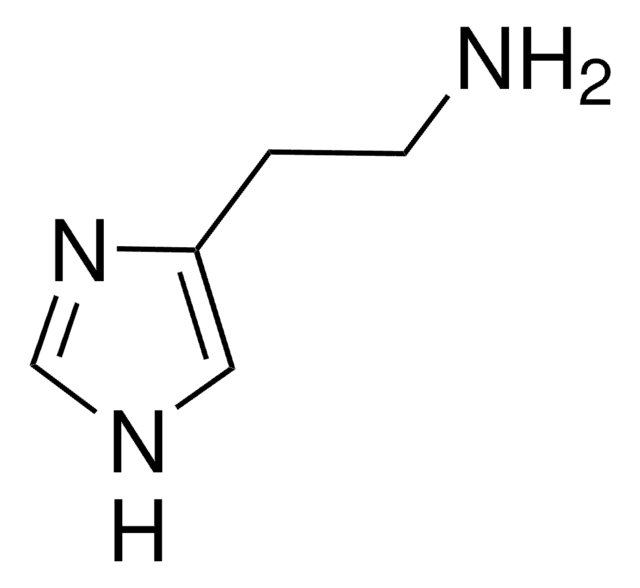49761
Spermidin
analytical standard
Synonym(e):
1,8-Diamino-4-azaoctan, N-(3-Aminopropyl)-1,4-diaminobutan
About This Item
Empfohlene Produkte
Qualität
analytical standard
Qualitätsniveau
Assay
≥97.5% (NT)
≥99.0% (GC)
Haltbarkeit
limited shelf life, expiry date on the label
Methode(n)
HPLC: suitable
gas chromatography (GC): suitable
Brechungsindex
n20/D 1.479 (lit.)
Dichte
0.925 g/mL at 25 °C (lit.)
Anwendung(en)
cleaning products
cosmetics
food and beverages
personal care
Format
neat
Lagertemp.
2-8°C
SMILES String
NCCCCNCCCN
InChI
1S/C7H19N3/c8-4-1-2-6-10-7-3-5-9/h10H,1-9H2
InChIKey
ATHGHQPFGPMSJY-UHFFFAOYSA-N
Suchen Sie nach ähnlichen Produkten? Aufrufen Leitfaden zum Produktvergleich
Allgemeine Beschreibung
Anwendung
Biochem./physiol. Wirkung
Verpackung
Vorsicht
Signalwort
Danger
H-Sätze
Gefahreneinstufungen
Eye Dam. 1 - Skin Corr. 1B
Lagerklassenschlüssel
8A - Combustible corrosive hazardous materials
WGK
WGK 3
Flammpunkt (°F)
233.6 °F - closed cup
Flammpunkt (°C)
112 °C - closed cup
Hier finden Sie alle aktuellen Versionen:
Besitzen Sie dieses Produkt bereits?
In der Dokumentenbibliothek finden Sie die Dokumentation zu den Produkten, die Sie kürzlich erworben haben.
Kunden haben sich ebenfalls angesehen
Protokolle
HPLC Analysis of Biogenic Amines on Ascentis® RP-Amide
Unser Team von Wissenschaftlern verfügt über Erfahrung in allen Forschungsbereichen einschließlich Life Science, Materialwissenschaften, chemischer Synthese, Chromatographie, Analytik und vielen mehr..
Setzen Sie sich mit dem technischen Dienst in Verbindung.











